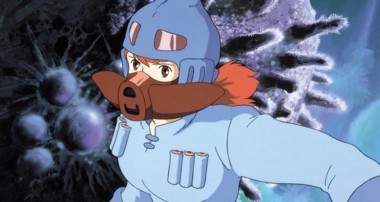Already in its short history, cinema has had more than its fair share of milestones: the introduction of sound, of color, of Wookies and intergalactic space explosions. But through it all, one form of moviemaking always seems to be at the forefront of new ideas, even as it is often overlooked by “serious” film buffs or dismissed as the province of childrens’ cartoons. I’m talking about animation.
It shouldn’t be so surprising. At its heart, all moviemaking is animation: a single second of screen time is actually 24 individual frames of film, each flashed before a projector’s lamp for such a small amount of time that our brains register it all as unbroken motion. Think of an old-fashioned flip book, its pages riffled at an unimaginable speed.
But if the idea behind it is ancient, the ideas it brings to life are anything but. From the beginning, animators have been free of the bonds that hamper filmmakers working in realism. Their visuals limited only by their imaginations, animators were some of our earliest cinematic dreamers. Today, that rich tradition continues, and one name is often on the lips of the people carrying the torch: Hayao Miyazaki. The visionary Japanese director and screenwriter, best known in this country for his Oscar-winning film Spirited Away, is widely regarded as one of the planet’s best filmmakers. Iin Japan, his film Princess Mononoke was the country’s highest-grossing film until the juggernaut Titanic knocked it off the pedestal.
This week, Amherst Cinema begins a month-long series of Miyazaki’s films in an attempt to bring this incredible work to a wider audience. Screening half a dozen films over the course of the festival—each film will show twice in its week—the theater is bringing in restored 35mm prints, presented in the original Japanese with English subtitles.
To kick things off, Amherst will show Nausicaä of the Valley of the Wind, Miyazaki’s debut film and one many still cite as his masterpiece. Set in a future laid to waste by environmental poisons and overrun by overgrown insect life, it tells the story of Nausicaä, a young princess whose inquisitive mind and love of the natural world leads her on an epic journey. Facing off against a kingdom set on eradicating the insects of the land, Nausicaä finds that protecting the world around her can have an impact that goes far beyond the lives she saves.
That sense of environmentalism proves a recurring theme in Miyazaki’s work, providing a rich vein of social commentary that helped his films resonate with a world that was waking up to its own destruction. Few people have told us our own stories so beautifully, and for so long. Enjoy this rare chance to catch these tales on the big screen while you can.
*
Also this week: One of the great jazz vocalists gets another turn in the spotlight when Amherst Cinema teams up with local jazz radio host Tom Reney to present Anita O’Day: The Life of a Jazz Singer. Co-directed by O’Day’s former manager Robbie Cavolina, the film proves that her life story is a messy one: multiple marriages and arrests, a heroin addiction, and more. Yet through it all O’Day retains a rough grace that lifts her above her troubled past, letting her look back on a wild life without regret. It screens Monday night at 7 p.m. See it, and you won’t regret it, either.•
Jack Brown can be reached at cinemadope@gmail.com.



